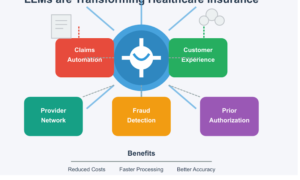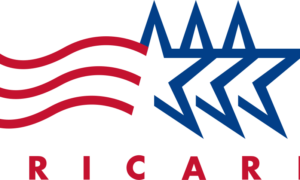The COVID-19 pandemic has led to unprecedented times in our history as a society. Those trends that were underway and would have matured in the near-term 5–10 years have now established themselves fully and may likely become a permanent fixture in our day-to-day lives going forward. This has been especially prevalent in the insurance industry where carriers have had to accelerate their digital capabilities, data augmentation and process automation to make way for a new era of selling, servicing and underwriting to stay relevant.
In this article, we explore 6 key areas of opportunity for insurance carriers that are particularly relevant during the ongoing uncertainty around the COVID-19 pandemic era, describe why those opportunities need to be addressed in the present time and offer perspective on how those opportunities could be tackled for on-going success. Collectively, these opportunities represent the most relevant areas for improvement in the insurance industry today, including:
- Transforming Agency Lifecycle Management
- Effectively Optimizing Underwriting and Risk Management
- Restructuring Claims Management
- Re-igniting Data to Support Agency Distribution Channels
- Proactively Managing Agency Consolidation
- Maximizing Omni-channel Opportunities for Business Insurance to the SMB Market Segment.
1) Transforming Agency Lifecycle Management
Unlike any other time in the vast history of traditional insurance carriers, the COVID-19 crisis has had a profound impact on their business. Relying heavily on the broker-agency model sales channel that has now largely shifted to remote working, insurance carriers that have had predominantly manual, paper-based and lengthy insurance purchase journeys are now rethinking and accelerating the need for greater digital transformation. One of the key areas for this is Agency Lifecycle Management which involves replacing paper files and analog processes with digitized issuance methods, the use of electronic signatures, electronic delivery of policy documents, and a vast array of electronic payment methods, replacing old-age methods that still take several weeks to complete. As a remote workforce of agents focus in on procuring customers and providing quality services for their customers during economic uncertainty, the need to reduce administrative work, due-diligence and other non-related activities has increased ten-fold. As a result, the appetite for digital tools for agents to simplify administrative tasks and help them grow their business has never been greater. Some of the advantageous digital capabilities and benefits within Agency Lifecycle Management include:
A. Increasing the number of applicants by simplifying, streamlining and automating the onboarding questionnaire and customer acquisition process
B. Increasing conversion rates and customer value by simplifying and improving the customer/agent experience
C. Reducing turnaround time by allowing for faster decision cycles to further improve the broker/agent experience
D. Increasing visibility on policy/proposal status for greater customer/agent satisfaction
E. Increasing labor efficiency by front-loading risk evaluation at the agent/broker level
F. Increasing sales by allowing cross-selling and up-selling of insurance policies across insurance lines of business.
2) Effectively Optimizing Underwriting and Risk Management
A successful digital transformation for an insurance carrier doesn’t just mean front-end experiential changes for the users (employees, agents and customers), but also back-end efficiencies that create faster velocities in processing proposals and policies to complement and provide an experience of utmost convenience, ease and transparency for the end customer. One significant way to achieve this is through streamlining the underwriting process. In a recent study of insurance carriers, companies that streamlined their underwriting processes saw an increase in sales by 14% over a 2-year period.
Some of the different ways in which the underwriting process can be streamlined include:
A) Allowing insurers to prioritize underwriting criteria enabling creative ways in which the minimum necessary amount of data can be collected to assess risks and make decisions. Incorporating new data to provide new, external sources of information can help make quicker decisions during the underwriting decision process and help provide a more refined categorization and understanding of risk. A more granular classification of risk may also lead to an improved claims experience and more advantageous pricing specificity. For example, some credit agencies such as TransUnion provide a digital TrueRisk score as validated by the Reinsurance Group of America used to assess appetite and risk that can directly impact top-line pricing and margin growth.
B) Some underwriting innovation programs also provide automation of existing rule sets to simplify complex policy decisions in non-human judgement related decisions. Continued automation of rule sets can lead to faster processing time to enhance the customer experience.
C) AI-driven techniques can also simplify risk assessments such as application forms that reduce the overall question set and the time it takes to assess risk through traditional underwriting methods. New data science techniques combined with machine-learning methods can sometimes provide faster, more innovative ways to assess risk and allow for meaningful decision-making. Despite knowing that customer segments may benefit significantly from such a change, few companies are shifting to them from traditional actuarial lab-based underwriting that can be strenuous and time-consuming, creating sub-par customer experiences.
3) Restructuring Claims Management
As remote working becomes an ongoing reality now during COVID-19 and for many permanently thereafter, the need for auto policies has significantly decreased, causing traditional carriers to recalibrate their large numbers of claims staff and provide necessary training to less depressed lines of business such as property insurance and business insurance that are experiencing a spike in claims volumes. As a consequence, insurers are having to ensure that claims staff have the right tools and technologies necessary to manage claims with low cost and quality while working remotely. This indirectly provides for opportunities to accelerate what many insurers have been experimenting with over the last several years; “straight-through processing of claims”. This is the ability to use an extensive arsenal of automation and artificial intelligence to process claims quickly while performing the necessary due diligence to catch fraudulent claims amongst other capabilities. While this provides for significant opportunity to reduce costs and improve the claims experience, it also comes with a great deal of risk. Many carriers must overcome legal, regulatory and compliance risk hurdles related to acceptance of e-signatures, e-documents, e-payments and process automation sometimes without traditional comprehensive due-diligence processes being performed. Such technological processes also put some key suppliers, independent appraisers, adjusters and vendors at risk of potentially losing their role in the value chain through streamlined processes. While there is no doubt claims processing will become much more digital in the near future, the need for an empathetic human touch will also never be foregone as many customers will long for a personal experience especially during these uncertain times. Also, at a time when claims are being increasingly adjusted virtually, carriers will look for more innovative technological ways to fulfill claims and reduce fraud while reducing their bottom-line costs, an area that provides great opportunity.
4) Re-igniting Data to Support Agency Distribution Channels
Historically, insurance agents have always relied heavily on in-person client conversations to bind insurance proposals. But in this COVID-19 era, they are forced to work remotely perhaps permanently in many cases, causing business to inevitably decrease with significant challenges of remotely building new customer relationships. A January 2020 survey revealed that almost 30% of agents believed their biggest challenge was lead generation, with nearly 60% of agents willing to pay 0.5% to 2% of their gross income for quality leads. At the same time, only 20% of agents have seen leads or the support to find new leads being handed down from insurance carriers. This poses a significant opportunity for insurance carriers to utilize their vast pools of data to proactively fulfill this need. Unfortunately, much of this enabling data is locked up in legacy systems or paper forms that needs to be mined into advanced analytic models to help agents in their lead generation efforts. Some of the opportunities that exist in the maximization of data include:
- Identification of ideal customer segments that have a greater propensity to purchase certain kinds of policies based on historic data trends
- Identification of customers at risk of churn or policy termination based on specific data inputs
- Identification of customers that may be good candidates for cross-selling and up-selling specific types of insurance
- Development of call lists to help agents focus on highest value leads
- Qualitative and quantitative feedback mechanisms integrated into existing data models to further refine development of trends.
5) Proactively Managing Agency Consolidation.
For many traditional insurance carriers today, the top 25 insurance and brokerage agencies contribute to over 50% of all written premiums. Not only does this demonstrate a heavy reliance by insurance companies on the agency/brokerage distribution model, but it also exhibits a strong need amongst consumers for in-person sales channels despite current physical distancing requirements. A few facts that demonstrate how this agency channel will continue to be heavily relied upon in the near future are 83% of home insurance, 81% of auto insurance and 56% of life insurance policies today are initiated by agents. As a result of this preference amongst customers, the rapid pace of change and evolution amongst these agency/brokerage distribution channels will continue to persist especially with the trend of continued distributor consolidation. Larger agencies will continue to acquire smaller agencies that specialize in specific geographies and industries as a means of expanding their breadth and depth of operations. As a consequence, larger agencies will continue to place greater emphasis on operational efficiencies and effective use of technologies to reduce costs in the long run. This will put greater pressure on carriers to manage these agencies’ expanding and consolidating workforces and their need for greater operational cost reductions, technological sophistication and simplicity of customer/agent engagement. The technological and operational enhancements necessary to support such changes will be expensive for carriers but highly beneficial to a healthy ongoing and long-term relationship with agency/broker distribution channels. Such enhancements include:
- Consolidation of teams into one unique record
- Avoidance of delays and missteps associated with commissions
- Unified policy views post-consolidation
6) Maximizing Omni-channel Opportunities for Business Insurance to the SMB Market Segment.
The business insurance line has been experiencing wide-scale transformation for over a decade now. Between 2008 and 2017, 138 business specific insurance companies entered the market out of a total 900 insurance market entrants. This intense competition has been driven by the lack of loyalty amongst small business owners, 90% of whom would switch insurance carriers if presented with a compelling value proposition by another carrier. Despite this trend, 79% of insurance companies today seem to be lagging behind in digital adoption in the business insurance segment. This trend has prompted several new InsureTechs to enter the market with product offerings at competitive prices with more benefits than incumbents, deemphasizing the need for agents in the digital age. For example, in the business insurance segment in the US, several new entrants have challenged the status quo including Vouch Insurance, Next Insurance, LAYR and Pie Insurance to cater to the price sensitivity and service quality needs of the SMB market segment. These InsureTechs specialize in providing superior self-service portals to handle tasks such as fast quotes traditionally conducted by agents while providing rapid coverage turnaround periods without human intervention that would normally take larger incumbents weeks to complete. There has also been an emergence in digital distribution agency channels with the rise of Insureon, Compare.com, Direct Surety and Dovetail. Today, these online insurance aggregators and direct digital channels are reporting similar, if not greater, volume. This is driven largely by a trend in consumers wanting and feeling more comfortable with digital self-service options and the need to reach out to carriers for plan changes, quotes and other enquiries directly, accelerated by COVID-19. A recent consumer survey in Spain found digital access in insurance increased by 30% since the pandemic began. While penetration of this direct-marketing/aggregator channel has been low in US markets compared with European and Asian markets, this channel is expected to grow rapidly as customer experiences improve and consumers increasingly demand fast, remote interactions in light of COVID-19.
These trends point to the need for traditional insurance carriers to now consider an omni-channel mix of the business insurance segment by entering into the direct business insurance channel in the SMB segment to capitalize on an accelerated need for direct and self-service options in business insurance.
Summary:
To implement these opportunity areas, insurance carriers need to experience a significant transformation journey involving vast internal changes due primarily to the legacy technology stack they embody which can be a significant challenge to overcome. Replacing current technologies with new vendors or workarounds still requires carriers to deploy agile methods to product development that require deployment in months.
More importantly, instead of focusing on building the ideal technology, carriers must embrace the need for a minimum viable product, one that produces just the right set of features to release a solution that creates significant value for agents, employees and customers alike.
Furthermore, implementing such innovative journeys can be a significant challenge involving systems thinking across the end-to-end customer experience, its internal capabilities and the overarching technology landscape. Such an effort cannot be done in silos but requires cross-functional teams to collaborate and co-create the intended journey with a deep understanding of how individual parts interrelate to be most effective.
Finally, the insurance industry is currently experiencing significant transformation that have accelerated nascent trends during these uncertain times. Today, insurance carriers that take short-term action and adequately respond to the opportunity areas above will be able to reduce costs, protect their margins and increase top-line revenues even at a time of great economic uncertainty. Those that do not respond adequately will risk losing customer/agent satisfaction, increased operating costs and establish a poor customer experience that will inevitably impact their bottom line. Developing an effective action plan and executing well on it with respect to these opportunity areas will be critical to future success.



































